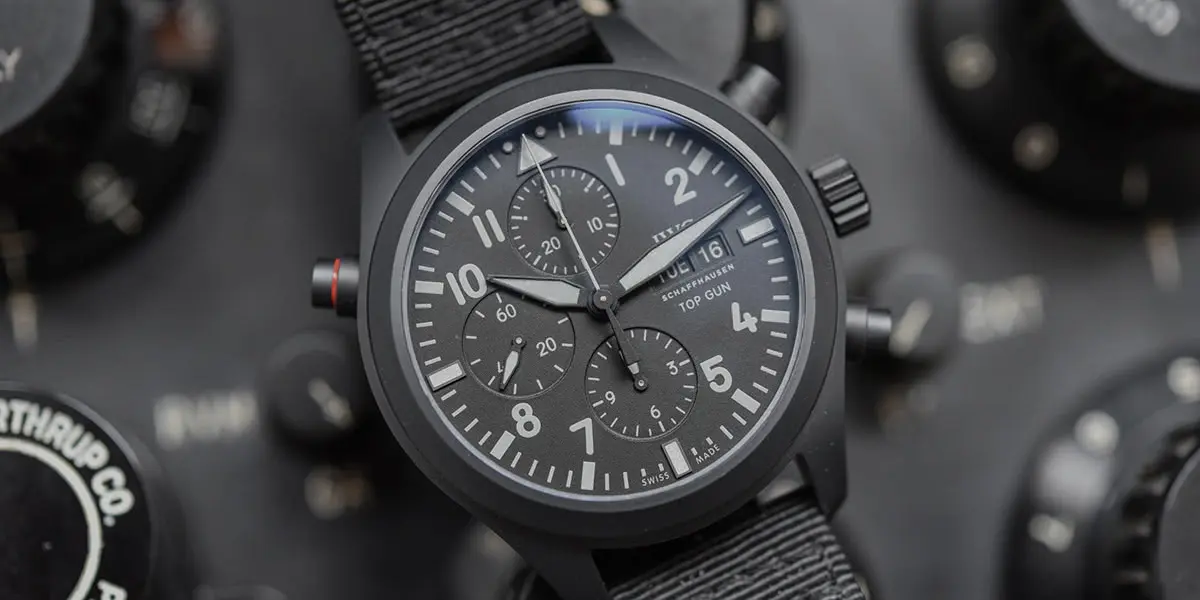Watch News
The 5 Most Important Pilot’s Watches Of All Times
The development of the pilot watch, from Alberto Santos-desire Dumont’s to give up his pocket watch to the commercialization of international travel leading to the rise of dual time-zones, tells the story of our attempts to take to the skies, despite the fact that they are now separated from the cockpits that gave rise to them in the first place. The five most inventive versions are used to illustrate the key events in the history of the pilot’s watch.[/vc_column_text][/vc_column][/vc_row][vc_row][vc_column][vc_custom_heading text=”1. Cartier Santos – 1904″ font_container=”tag:h3|text_align:left”][vc_single_image image=”63738″ img_size=”full”][vc_column_text]The Cartier Santos was intended to be a pilot’s watch, while not appearing like one at all. It was created by Louis Cartier for his daring pilot friend Alberto Santos-Dumont who also manufactured flying devices. In order to avoid hunting for a pocket watch while piloting one of his inventions, Santos-Dumont asked Cartier to develop a watch that he could wear on his wrist.
The outcome was the creation of the first wristwatch and pilot’s watch. Despite being lost, the little, squared-cased piece’s ancestry can be seen in the modern designs’ clean lines.[/vc_column_text][/vc_column][/vc_row][vc_row][vc_column][vc_custom_heading text=”2. Rolex GMT-Master – 1954″][vc_single_image image=”63740″ img_size=”full”][vc_column_text]The dual time-zone feature was first made available to the public on this watch. This feature was helpful for people who wanted to keep track of their home and local time as plane travel increased in popularity. Particularly enamored were pilots. Despite what some people like to say, Pan-Am did ask Rolex to be the official timepiece of its pilots, which is how the now-iconic red and blue bezel, known to collectors as the “Pepsi,” came to be.
Since then, the GMT-Master II has replaced it, adding a third time zone as a result of the installation of independent hour and 24-hour hands that free up space on the bezel for an additional time zone.[/vc_column_text][/vc_column][/vc_row][vc_row][vc_column][vc_custom_heading text=”3. Longines Lindbergh – 1930″][vc_single_image image=”63741″ img_size=”full”][vc_column_text]Pilot Charles Lindbergh developed this intriguing-looking timepiece as a replacement for Lieutenant Commander Philip Weems’s earlier navigational device, which was also made by Longines. Lindbergh made his transatlantic flight in 1927. Weems created a seconds ring that could be adjusted separately, enabling pilots to synchronize their watches with radio time without having to halt the seconds hand.
In order to determine the difference between civil and solar time, Lindbergh created a watch that could compute longitude using the time, the Hour Angle, and a sextant (all incorporated in the timepiece). At the time, there were no radio communications over the ocean.
It looks fantastic and is a powerful navigational aid. Just be careful not to admit to anyone that you are unsure of how to use it.[/vc_column_text][/vc_column][/vc_row][vc_row][vc_column][vc_custom_heading text=”4. Breitling Chronomat – 1941 & Navitimer – 1957″][vc_single_image image=”63743″ img_size=”full”][vc_column_text]Without mentioning the Chronomat, Breitling’s revolutionary Navitimer cannot be discussed. Breitling submitted a patent application to the Swiss government in 1940 for a wristwatch-compatible circular slide rule. They were favorably received, but when Breitling was ready to upgrade it, it opted to design a timepiece that would actually be helpful to commercial pilots, giving rise to the Navitimer.
The new watch had a logarithmic scale, which was first used by Scottish astronomer John Napier in the 17th century. In order to measure the three most crucial units for pilots—STAT for standard mileage, KM for kilometers, and NAUT for nautical miles—a mathematician by the name of Marcel Roberts modified this. With these three working together, complicated calculations like average speed and fuel usage were made simple for pilots.[/vc_column_text][/vc_column][/vc_row][vc_row][vc_column][vc_custom_heading text=”5. Zenith Montre D’Aeronef Type 20 – 1909″][vc_single_image image=”63744″ img_size=”full”][vc_column_text]The Wright Brothers and Santos-Dumont helped usher in the era of the gentleman pilot. And those with money and a touch of lunacy wanted their names to be written in stone in the annals of history. Louis Blériot, the first person to fly across the English Channel, was one of those who was successful. The Zenith watch that was fastened to his wrist furthered the association of Swiss watchmakers with flying.
It also served as a model for the chronometric device later created for the cockpits of French aircraft, the Montre d’Aeronef Type 20 in 1939.[/vc_column_text][/vc_column][/vc_row]








 RETURN HOME
RETURN HOME By Brands
By Brands BY CATERGORIES
BY CATERGORIES OUR BLOGS
OUR BLOGS ROLEX SALES
ROLEX SALES HELP CENTRE
HELP CENTRE CUSTOMER SERVICE
CUSTOMER SERVICE